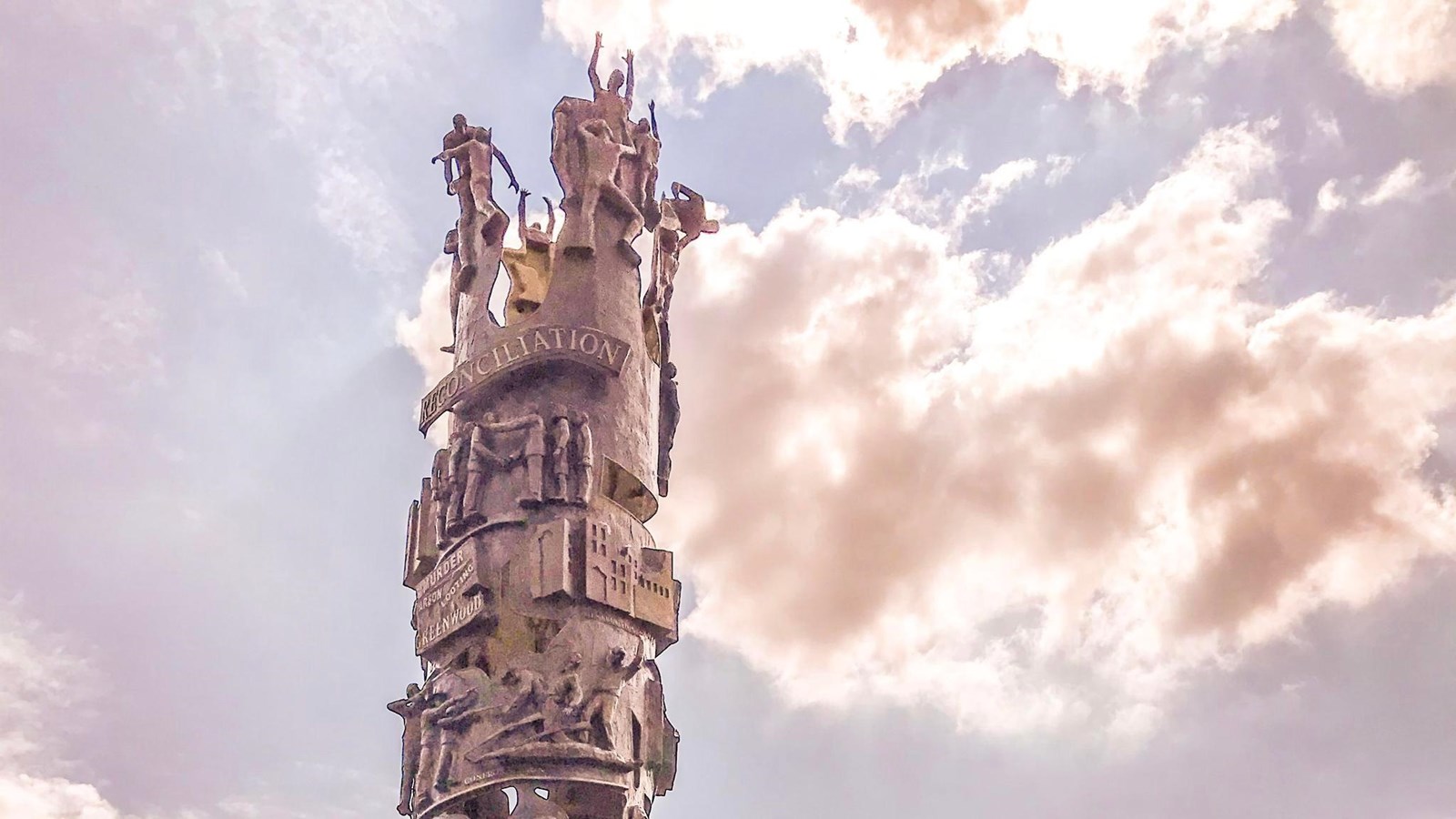Last updated: July 1, 2020
Place
Oklahoma: John Hope Franklin Reconciliation Park

https://www.photoblog.com/modglinphotography/2018/10/18/sculptures-statues/
The John Hope Franklin Reconciliation Park, which features Hope Plaza and the Tower of Reconciliation, memorializes the history of African Americans in Oklahoma, including the lives lost to racial violence, with the goal of transforming years of racial division into a hopeful future of reconciliation and cooperation for Tulsa and the Nation.
The Park is named for distinguished historian, educator, and civil rights advocate Dr. John Hope Franklin who irrevocably transformed our understanding of American history through his scholarship and activism, while advancing the cause of the African American civil rights movement during the twentieth century.
In 1921, Franklin's father, Buck Colbert (B.C.) Franklin, a prominent lawyer, moved to Tulsa, Oklahoma, and bore witness to what became known as the Tulsa Race Massacre of 1921, one of the most devastating acts of racial violence recorded in U.S. history. The massacre, which began on May 31, 1921, culminated in 2 consecutive days of widespread violence and devastation in Tulsa’s Greenwood area, one of the wealthiest Black communities in the Nation at that time, leaving many residents dead or imprisoned. Approximately 35 blocks of homes, churches, and businesses were destoryed.
B.C. Franklin survived the Tulsa Race Massacre of 1921 and defended other survivors of the massacre, successfully suing the city before the Oklahoma Supreme Court, which overturned a Tulsa ordinance that restricted the city’s Black community in its efforts to rebuild after the Tulsa Massacre. After the rebuilding began, B.C. Franklin’s family, including his wife, Molly (Parker), son John Hope Franklin, and daughter Harriett joined him in Tulsa in 1925.
Dr. John Hope Franklin, inspired by the life and work of his father, B.C., served in many professional and educational organizations, including the National Association for the Advancement of Colored People’s Legal Defense Fund, providing historical and sociological context for the landmark 1954 U.S. Supreme Court case, Brown v. Board of Education of Topeka.
In June 2020 the John Hope Franklin Reconciliation Park became part of the African American Civil Rights Network through secretarial decree.
The African American Civil Rights Network recognizes the civil rights movement in the United States and the sacrifices made by those who fought against discrimination and segregation. Created by the African American Civil Rights Act of 2017, and coordinated by the National Park Service, the Network tells the stories of the people, places, and events of the U.S. civil rights movement through a collection of public and private elements.
